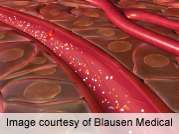Using a glycated hemoglobin threshold of ≥6.5 percent is a specific but not sensitive early indicator of type 1 diabetes in high-risk children and young adults, according to a study published in the September issue of Diabetes Care.
(HealthDay)—Using a glycated hemoglobin (HbA1c) threshold of ≥6.5 percent is a specific but not sensitive early indicator of type 1 diabetes (T1D) in high-risk children and young adults, according to a study published in the September issue of Diabetes Care.
Kendra Vehik, Ph.D., of the University of South Florida in Tampa, and colleagues examined the utility of HbA1c as an alternative criterion for impaired glucose tolerance (IGT) or T1D in high-risk individuals younger than 21 years. Participants were recruited from four prospective studies and included 884 participants from Type 1 Diabetes TrialNet Natural History; 587 from Diabetes Prevention Trial-Type 1; 420 from Trial to Reduce IDDM in the Genetically at Risk; and 91 from The Environmental Determinants of Diabetes in the Young. All participants had an HbA1c within 90 days of an oral glucose tolerance test (OGTT) and a two-hour plasma glucose measure.
The researchers found that using HbA1c of ≥5.7 percent as an indicator of IGT resulted in a very low sensitivity across the studies (8 to 42 percent) and variable specificity (64 to 95 percent). Sensitivity was very low (24 to 34 percent) and specificity high (98 to 99 percent) using HbA1c of ≥6.5 percent as a threshold for T1D. Across the four studies, the positive predictive value of HbA1c varied from 50 to 94 percent.
"HbA1c ≥6.5 percent is a specific but not sensitive early indicator for T1D in high-risk subjects <21 years of age diagnosed by OGTT or asymptomatic hyperglycemia," the authors write. "Redefining the HbA1c threshold is recommended if used as an alternative criterion in diagnosing T1D."
The formulas used in the study were provided free of charge by Mead Johnson Nutrition.
More information:
Abstract
Full Text (subscription or payment may be required)
Journal information: Diabetes Care
Copyright © 2012 HealthDay. All rights reserved.




















